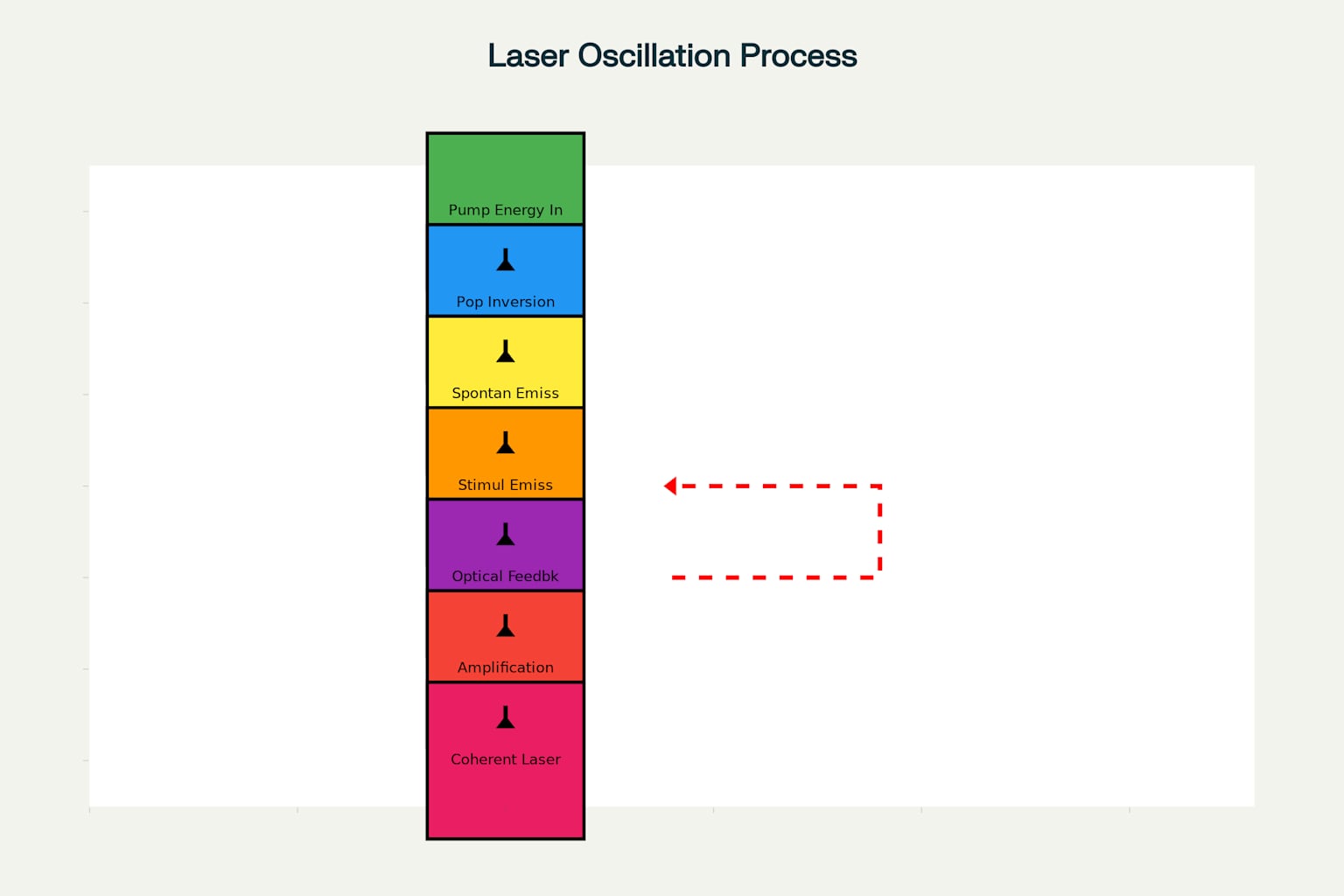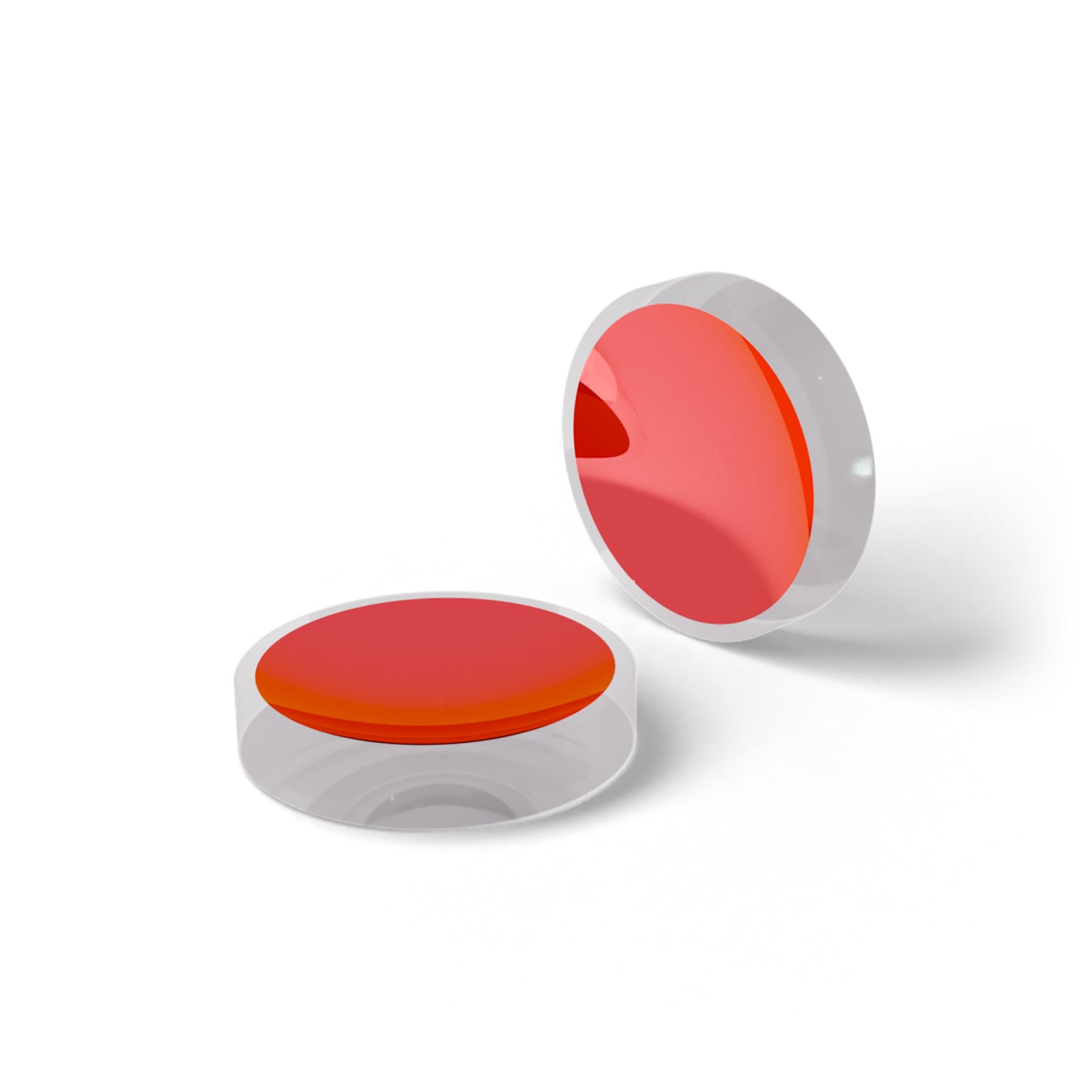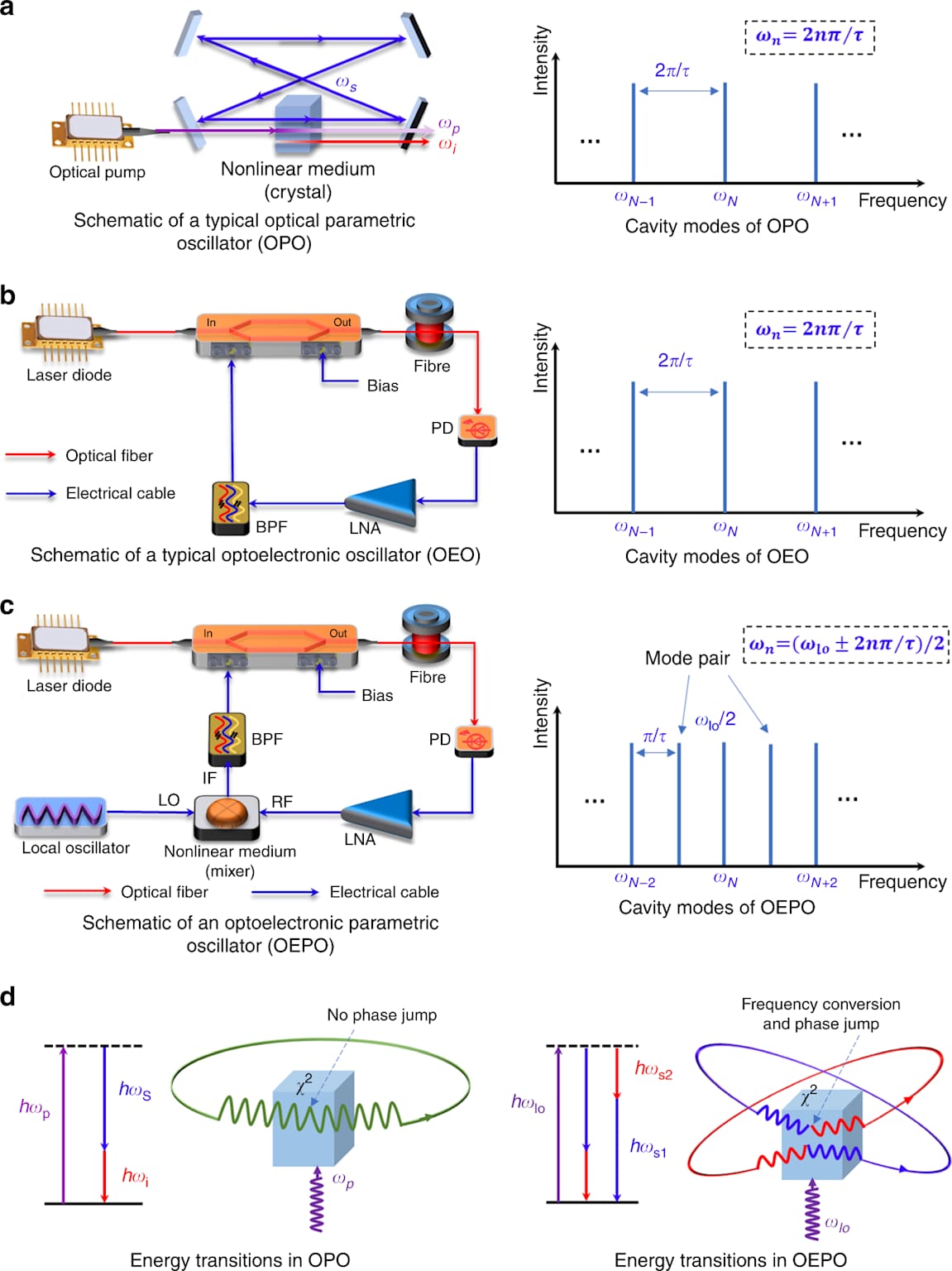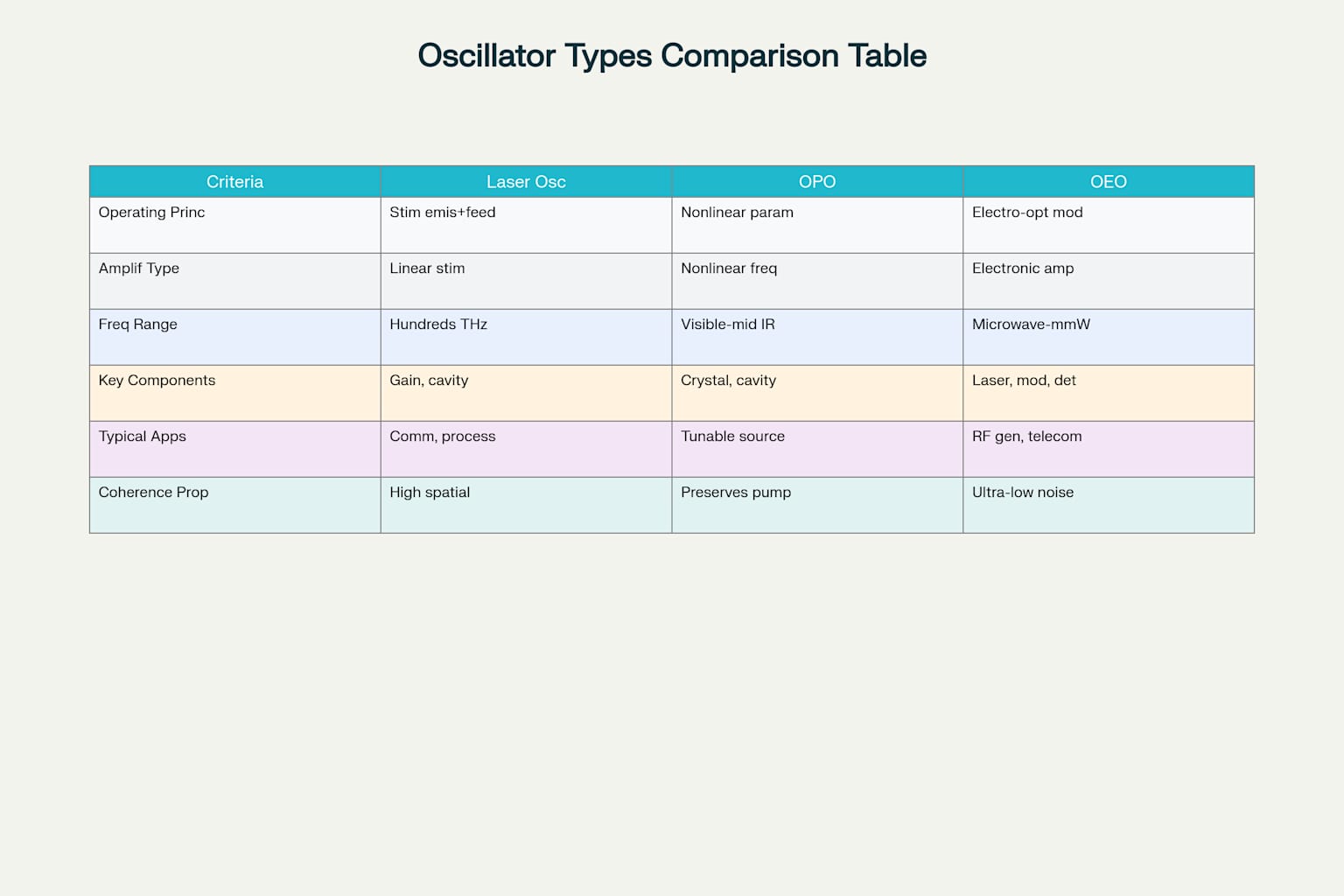Laser physics covers many oscillator types. They work in different frequency ranges and use unique physical ways to make coherent electromagnetic radiation. This guide breaks down their basics, how they work, and where they’re used.
In photonics and laser tech, oscillators are key building blocks. They make coherent electromagnetic radiation across a wide spectrum. Unlike amplifiers, which just boost existing signals, oscillators create their own—no external input needed. They use positive feedback to turn noise or spontaneous emission into periodic oscillations.

Laser Oscillators are complex high-frequency optical oscillators. They usually work at optical frequencies—hundreds of terahertz. Think of them as optical versions of electronic oscillators, but 5-6 times faster.
They work on a simple principle: combine two key parts. One is an optical amplifier (gain medium), the other an optical resonator that gives needed feedback. The gain medium—can be an gas, liquid, crystal, or semiconductor material—boosts optical signals through stimulated emission. This needs population inversion: more atoms in an excited state than on the ground state.
A typical Laser Oscillator has several critical parts working together:
Gain Medium: Active material where stimulated emission happens. Examples include helium-neon gas or Nd:YAG crystals.
Optical Resonator: Usually made with two mirrors at opposite ends of the gain medium. They create an Fabry-Pérot cavity that gives optical feedback. One mirror is almost 100% reflective; the other is an output coupler with partial transmission.
Pump Source: Gives energy to keep population inversion. It can be optical (flashlamps), electrical (direct current), or chemical.
The resonator design matters a lot. Cavity length and mirror curvature set the spatial mode structure. Finesse and quality factor affect spectral purity and coherence.

The big difference? Optical feedback. Laser Oscillators have it—photons circulate through the gain medium multiple times, building up intensity. Amplifiers don’t—they work in a single pass.
Amplifiers boost existing laser signals (used in fiber-optic comms or MOPA setups). Laser Oscillators make coherent light from scratch—they’re primary light sources.
Optical parametric oscillators (OPOs) take a totally different approach to making coherent light. They use nonlinear optical processes instead of stimulated emission.
In an OPO, an high-energy pump photon turns into two lower-energy photons—signal and idler. This happens through a nonlinear interaction on a crystal without inversion symmetry. Energy conservation means pump frequency equals signal plus idler (ωp = ωs + ωi). Momentum conservation needs phase matching between interacting waves.
OPOs’ biggest advantage? Their amazing wavelength tunability. Adjust phase-matching conditions—through temperature tuning, crystal orientation changes, or electric fields—and they can reach wavelengths conventional lasers can’t. This makes them perfect for spectroscopy—especially in the mid-infrared, where many molecular absorption lines are.
They can also have high conversion efficiency. The nonlinear process could hit 100% quantum efficiency in perfect conditions. And since no population inversion is needed, they work at room temperature—no thermal issues like high-power lasers.

But OPOs have downsides. They need high-quality pump sources (usually other lasers) with great coherence. Phase-matching limits acceptance angle and temperature stability—you need precise control.
Their threshold power for oscillation is higher than Laser Oscillators, especially for continuous-wave operation. This is because the nonlinear conversion process is less efficient, and gain per round trip is lower than stimulated emission in gain media.
Optoelectronic oscillators (OEOs) are unique hybrid systems. They combine optical and electronic parts to make high-quality microwave and millimeter-wave signals.
Their basic principle? Turn electrical signals into optical ones via electro-optic modulation. Send the modulated light through a low-loss optical fiber. Then turn it back to electrical using a photodetector. The signal is amplified, filtered, and sent back to the modulator—creating a closed-loop oscillator.
OEOs are great at making microwave signals with very low phase noise. They’re as good as the best crystal oscillators. This comes from the high quality factor (Q) of long optical fiber delay lines—they store energy for a long time with little loss.
OEO oscillation frequency depends on the round-trip time of the optoelectronic loop. This lets them make signals from megahertz to millimeter-wave frequencies. No frequency-dependent noise like electronic oscillators—perfect for high-frequency apps.
They’re used in radar systems, satellite communications, test equipment, and frequency synthesis for comms. And since they make both optical and electrical outputs at the same time, they’re useful in photonic radio frequency systems.
Photoelectron oscillators aren’t talked about much in books. But they’re specialized devices—they make trains of short optical pulses.
They work by emitting photoelectrons from photocathode materials. This happens when the materials are hit by light or excited by electrical fields. Emitted electrons can be controlled with electromagnetic fields—creating temporal patterns that make synchronized light pulses.
They’re used in specialized scientific tools—especially in photoelectron spectroscopy and ultrafast laser systems. They’re also in free-electron laser systems, where electron beam timing and synchronization are key.
Their ability to make precise timing sequences makes them useful in apps that need synchronized electron beam control—like accelerator physics or advanced materials testing.

The oscillators we’ve talked about work in totally different parts of the electromagnetic spectrum:
Laser Oscillators: Optical frequencies (100–1000 terahertz)—infrared to ultraviolet.
Optical Parametric Oscillators: Wider tunability—visible to far-infrared (depends on pump wavelength and crystal properties).
Optoelectronic Oscillators: Microwave/millimeter-wave (megahertz to hundreds of gigahertz)—bridges electronic and optical sources.
Each type has its own pros and cons:
Laser Oscillators: Great coherence and output power. Mature technology—optimized for many apps.
Optical Parametric Oscillators: Unmatched wavelength flexibility. But need complex pumps and precise control.
Optoelectronic Oscillators: Excellent frequency stability and low phase noise in microwaves. But lower photon energies than optical oscillators.
Today’s oscillator research focuses a lot on integration and miniaturization—especially in silicon photonics. Chip-scale oscillators could make devices smaller, use less power, and cost less. They might also work better—thanks to better environmental isolation and thermal management.
Advanced materials like two-dimensional semiconductors and new nonlinear crystals are opening new doors. They have unique properties that could make oscillators with performance no one’s seen before.
New ideas like random lasers and parametric oscillators with distributed feedback could change how we design oscillators. These methods could make oscillators with totally different noise and operational principles.
Adding machine learning and adaptive control to oscillator design could make self-optimizing devices. They can keep working at their best no matter the conditions—improving reliability and performance.
Optical and electronic oscillators cover a wide range of technologies. Each is optimized for specific uses and frequency ranges—from Laser Oscillators at hundreds of terahertz to OEOs connecting optical and microwave domains.
To pick the right technology for a specific use, you need to understand each oscillator’s basic principles, advantages, and limits. As research keeps pushing limits, new ideas will come out—expanding what coherent radiation sources can do.
Developing these technologies will definitely help advance fields like telecommunications, sensing, fundamental science, and quantum tech. And since different oscillator types work well together—especially in hybrid systems—future developments will use more integration to get never-before-seen performance.
Contact: Jason
Phone: +8613337332946
E-mail: [email protected]
Add: Hangzhou City, Zhejiang Province, China